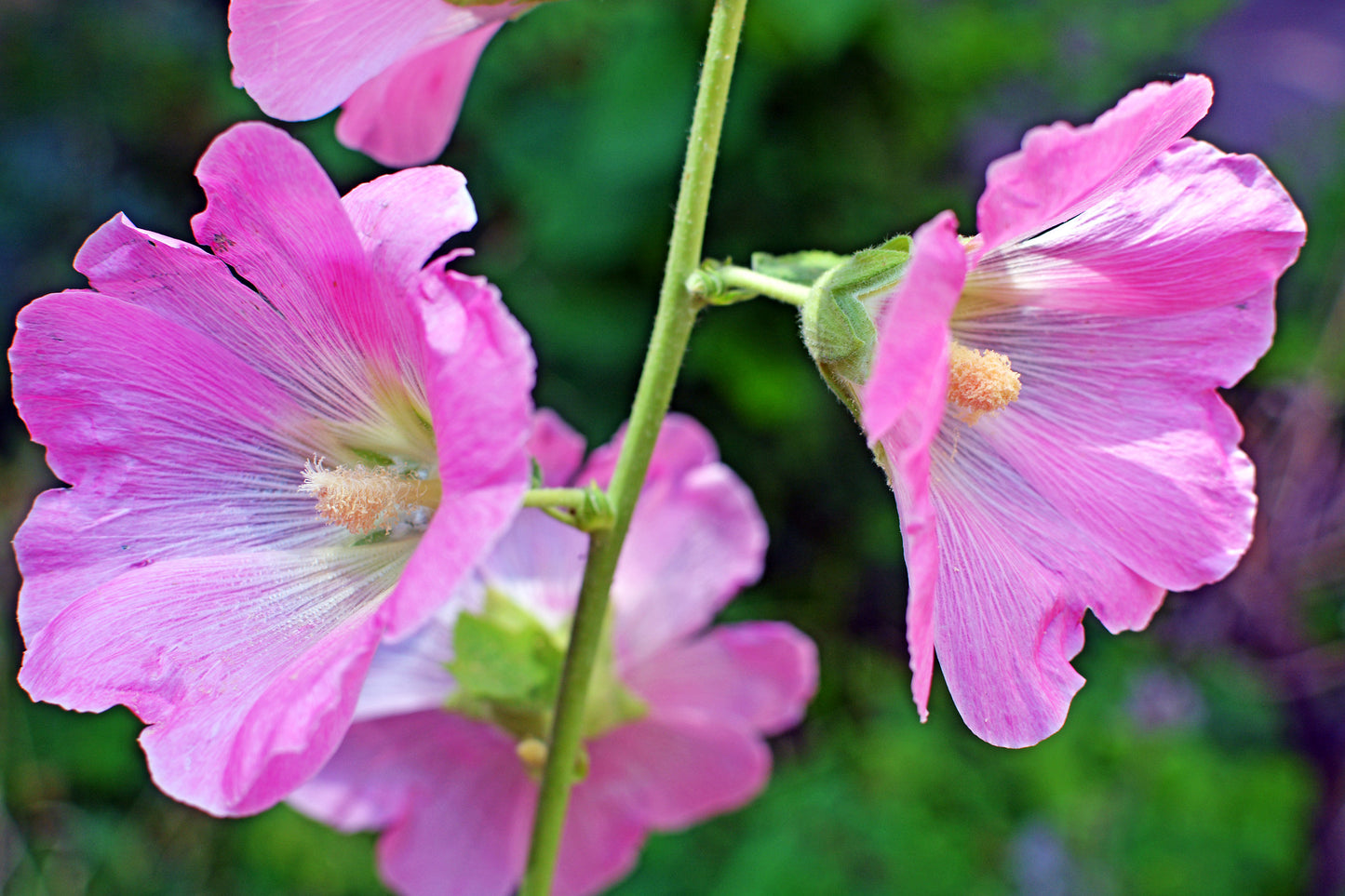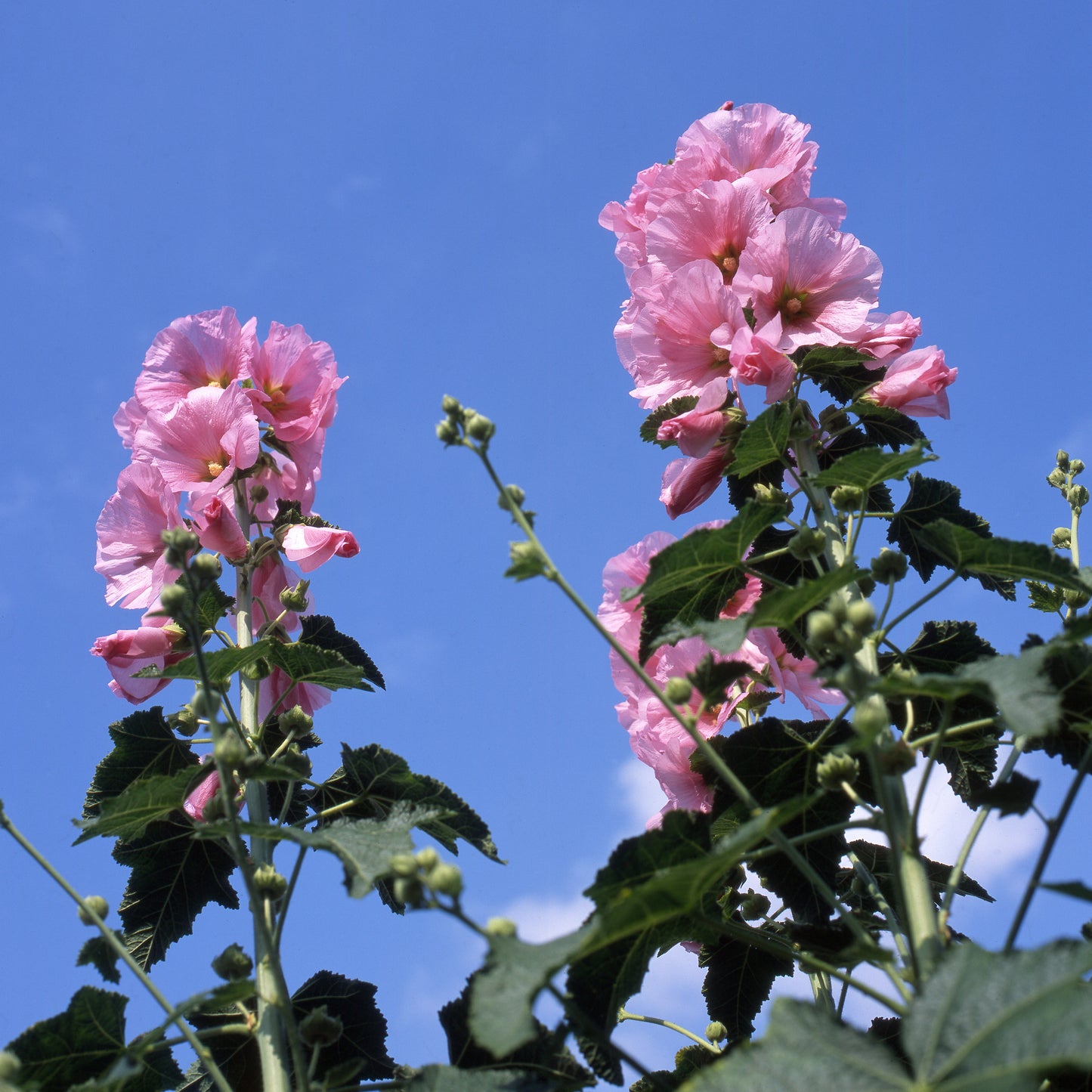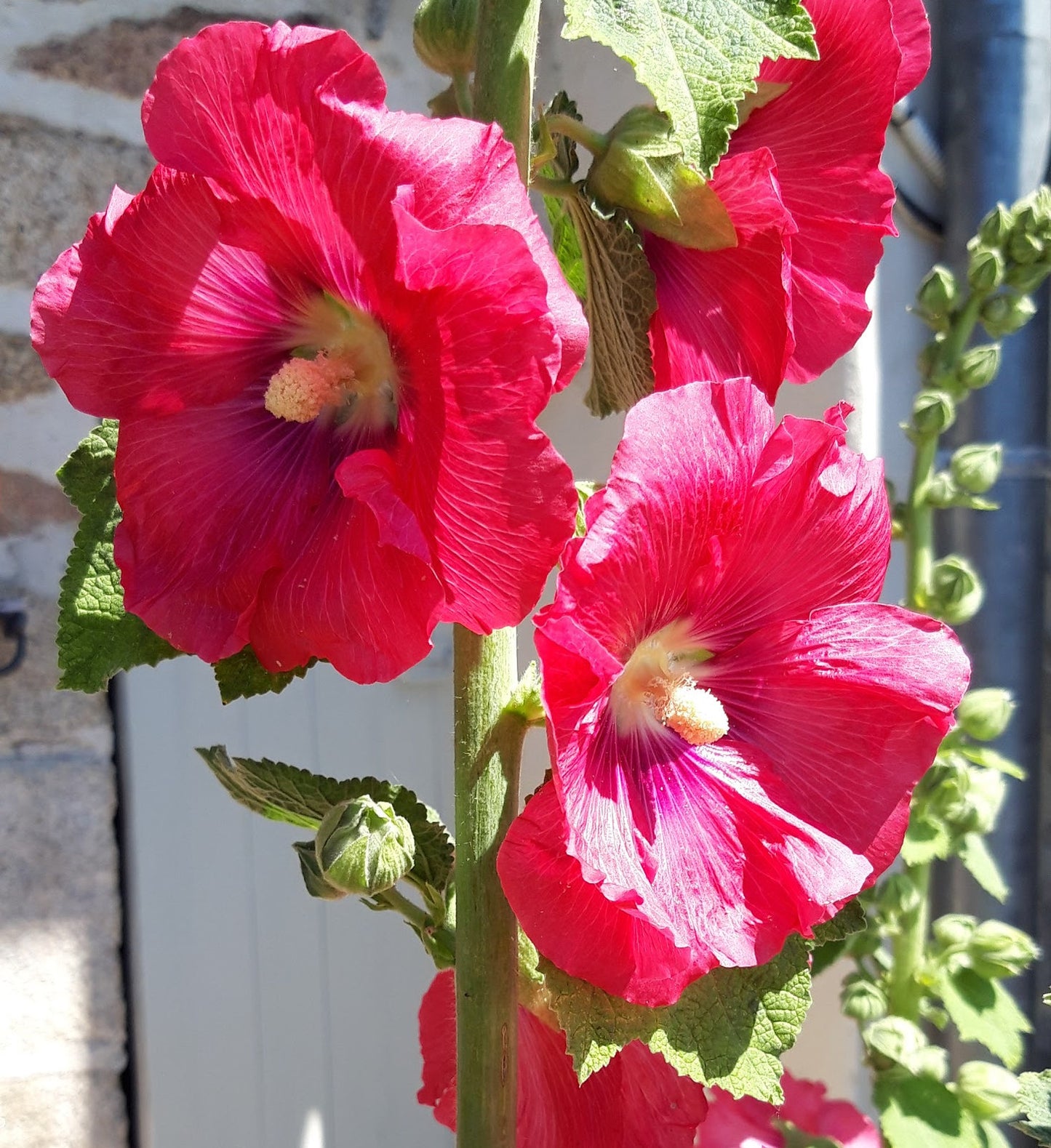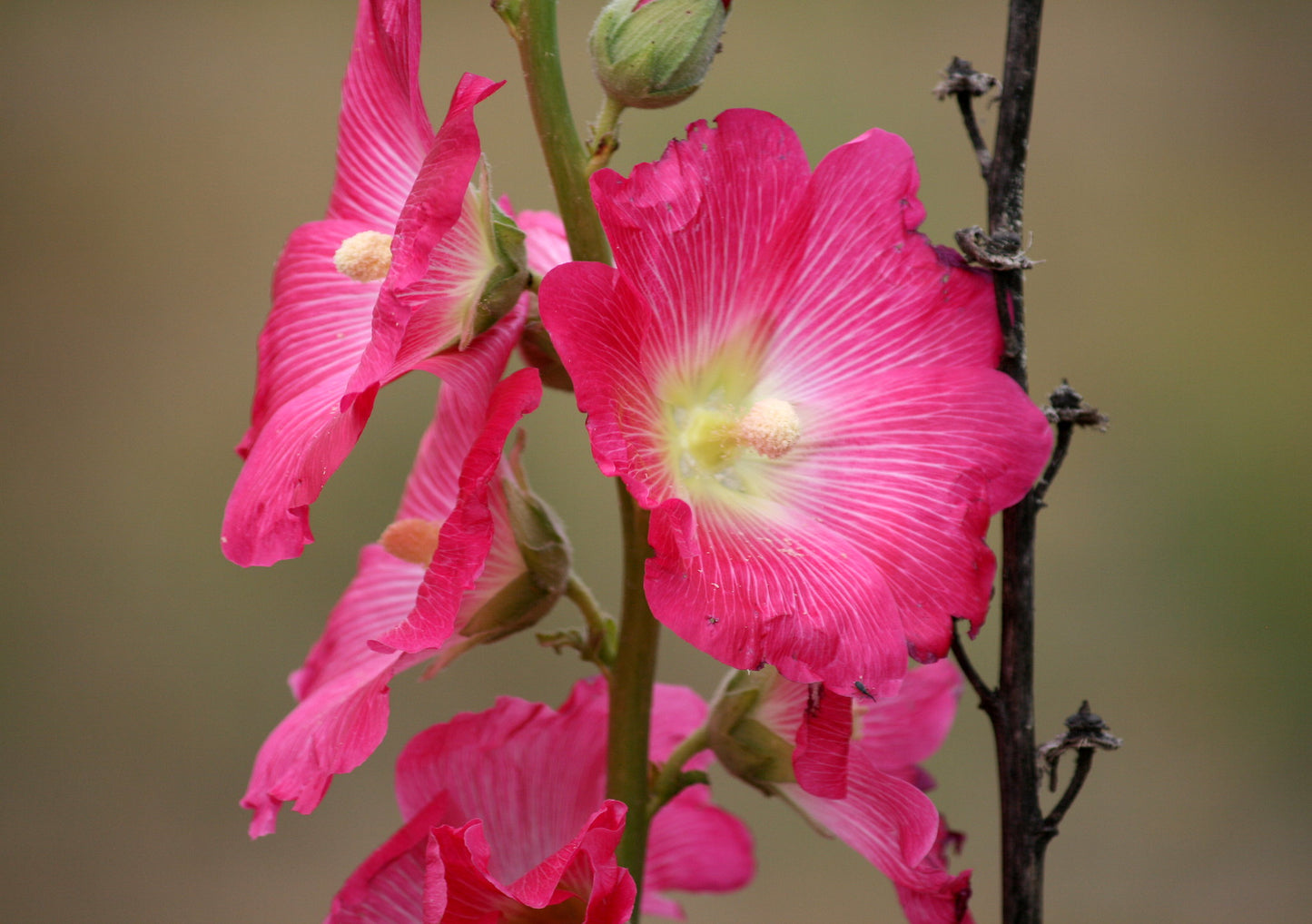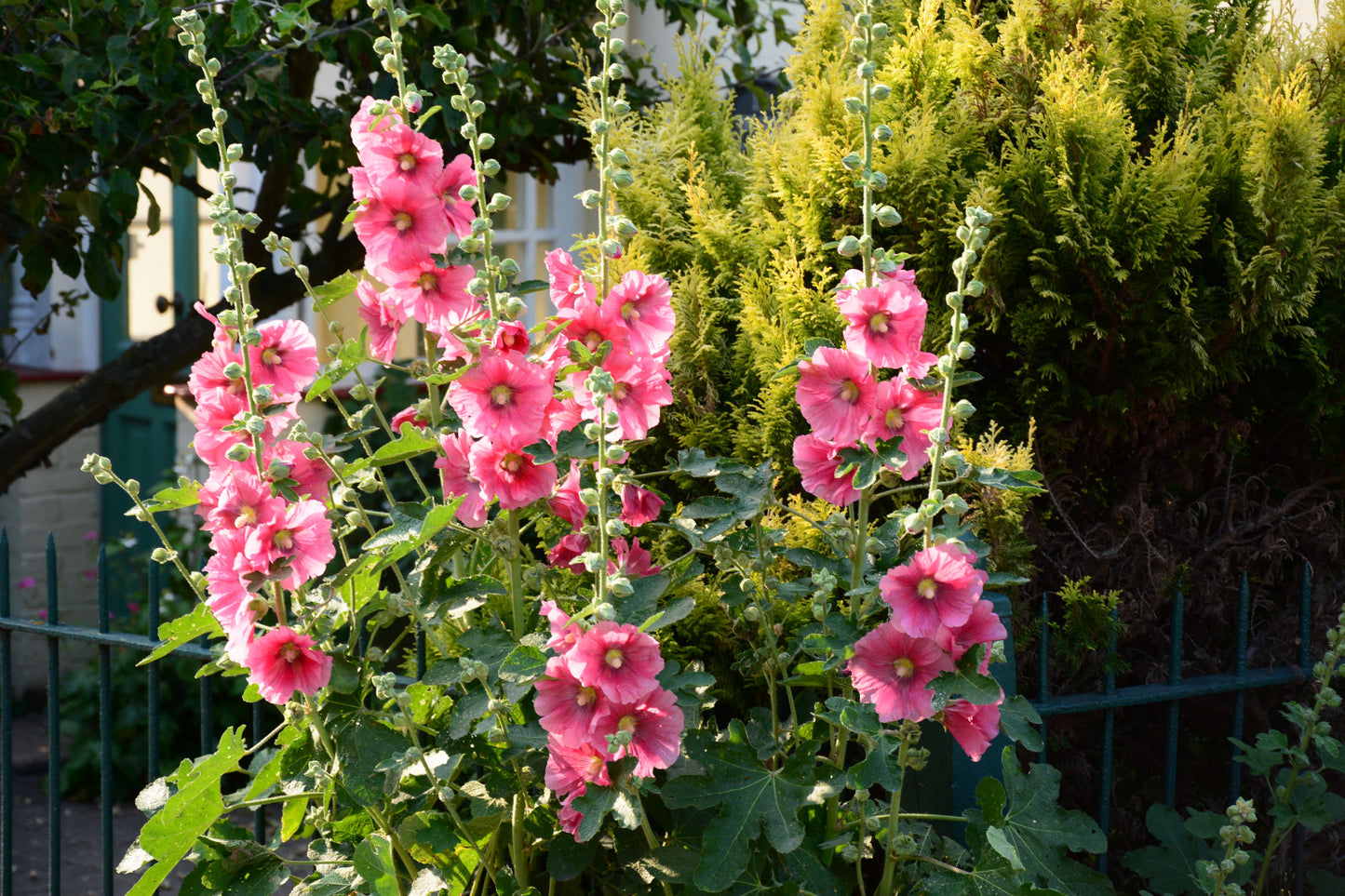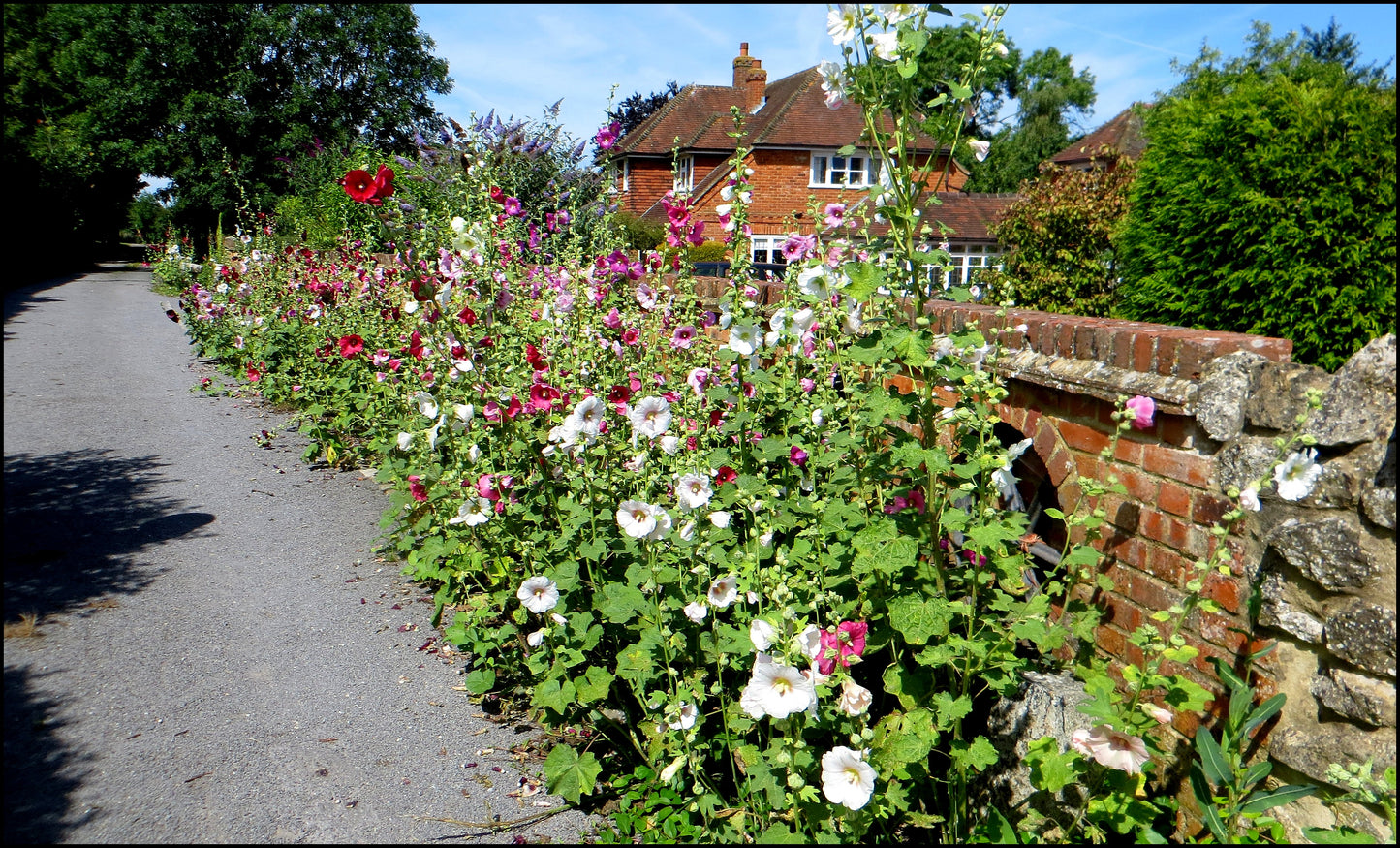Floridaseeds
Hollyhock Alcea rosea 50 Seeds USA Company
Hollyhock Alcea rosea 50 Seeds USA Company
Couldn't load pickup availability
Alcea rosea, commonly known as hollyhock, is a beautiful and tall flowering plant that belongs to the Malvaceae family. Hollyhocks are known for their towering spikes of large, colorful, cup-shaped flowers and are a favorite among gardeners for their cottage garden charm. Here are some key characteristics and information about Alcea rosea:
Key Characteristics of Alcea rosea:
Growth Habit: Hollyhocks are biennial or short-lived perennials. In their first year, they typically produce a rosette of large, lobed leaves close to the ground. In the second year, they send up tall, erect flower spikes, which can reach heights of 3 to 8 feet (0.9 to 2.4 meters) or even taller, depending on the variety and growing conditions.
Leaves: The leaves of hollyhocks are large, heart-shaped, and deeply lobed. They are typically medium to dark green in color and have a somewhat rough texture.
Flowers: The most distinctive feature of hollyhocks is their showy, single or double, cup-shaped flowers. These flowers can be found in a wide range of colors, including shades of pink, red, purple, yellow, white, and even black. The flowers are often adorned with a contrasting central "eye" in a different color.
Blooming Period: Hollyhocks typically bloom in the summer months, usually from late spring through early summer. The flowering period can vary depending on the climate and growing conditions.
Sunlight: Hollyhocks prefer full sun and can tolerate partial shade, although they may not flower as abundantly in shadier conditions.
Soil: These plants thrive in well-drained, fertile soil. They are relatively adaptable but do best in soil with good organic matter content.
Support: Due to their tall growth habit, hollyhocks may require staking or support to prevent them from bending or falling over in windy conditions.
Self-Seeding: Hollyhocks have a tendency to self-seed. After flowering, they produce seed pods that burst open to release seeds. New plants can sprout from these seeds in subsequent growing seasons.
Wildlife Attraction: Hollyhocks are known for attracting pollinators like bees, butterflies, and hummingbirds to the garden.
Cottage Garden Favorite: Hollyhocks are a classic choice for cottage gardens, adding a touch of old-world charm and romance to the landscape.
Hollyhocks are cherished for their tall, stately presence and the colorful vertical interest they bring to gardens. They can be planted along fences, against walls, or at the back of garden beds to create a beautiful backdrop of flowers. Due to their biennial nature, it's common for gardeners to sow hollyhock seeds in the first year to ensure a continuous display of blooms in the following growing season. With their vibrant and eye-catching flowers, hollyhocks are sure to be a focal point in any garden.
Growing Instructions
Growing Medium: Use a well-draining, fertile potting mix suitable for starting seeds. You can also add some compost or organic matter to improve soil quality.
Containers: Choose seedling pots or trays with good drainage holes. The size of the containers should allow for the initial growth of the seedlings.
Sunlight: Hollyhocks require plenty of sunlight. Make sure you have a sunny spot or provide supplemental grow lights.
Steps to Grow Hollyhocks from Seeds:
Stratification (Optional): Hollyhock seeds can benefit from cold stratification, which helps break dormancy. To stratify, place the seeds in a damp paper towel or sand and store them in the refrigerator for about two weeks.
Sowing: Fill your seedling pots or trays with the prepared potting mix. Plant the hollyhock seeds about 1/4 to 1/2 inch (6-12 mm) deep in the mix. Space them a few inches apart.
Watering: Keep the potting mix consistently moist but not waterlogged. It's a good practice to water from below by placing the seed tray in a larger tray with water, allowing the soil to soak up moisture and avoiding disturbance to the seeds.
Covering: Place a clear plastic lid or plastic wrap over the pots or trays to create a mini greenhouse effect, which helps maintain high humidity around the seeds. Keep the lids on until germination.
Germination: Germination typically takes about 7 to 14 days, but it can vary. Once the seedlings have a couple of true leaves, you can gradually remove the cover to acclimate them to lower humidity.
Transplanting: When the seedlings have grown large enough and have developed a few sets of true leaves, they can be transplanted into larger pots or directly into the garden. Be gentle when handling the young plants to avoid damaging the roots.
Hardening Off: Before planting your hollyhock seedlings outdoors, it's essential to harden them off by gradually acclimating them to outdoor conditions over about a week.
Planting Outdoors: Choose a sunny location in your garden with well-drained soil. Space the hollyhock plants according to the recommended spacing for the specific variety you're growing.
Caring for Hollyhocks: Once established, hollyhocks are relatively low-maintenance. Water them regularly, especially during dry spells. Provide support, like stakes or trellises, as the plants grow tall. Deadhead spent flowers to promote continuous blooming.
Hollyhocks are known for their old-world charm and the vertical interest they add to gardens. With their vibrant and tall flower spikes, they can be a striking addition to your garden, attracting pollinators and providing a touch of cottage garden romance.
Materials
Materials
Shipping & Returns
Shipping & Returns
Dimensions
Dimensions
Care Instructions
Care Instructions
Share
